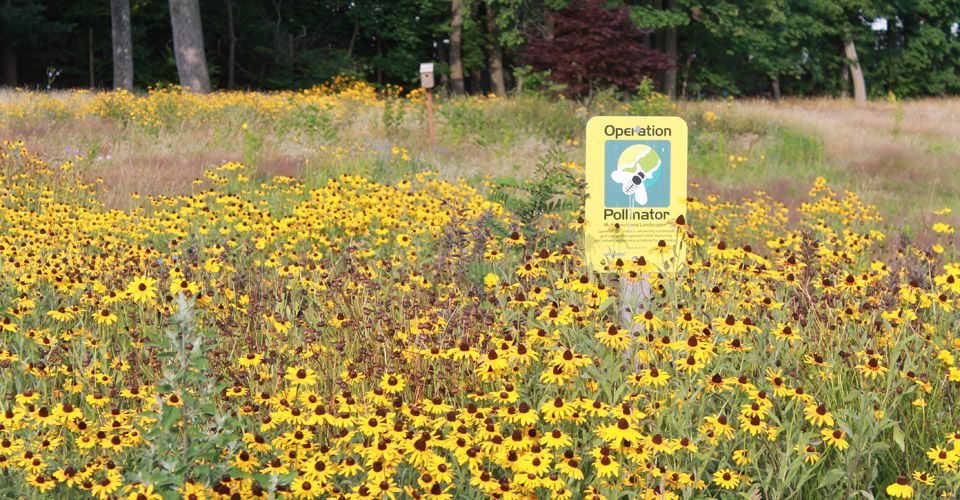Spring is a great time to consider adding native plants to your facility to create additional habitat for pollinators and review the availability of nesting sites for these species.

Pollinator habitat on the golf course includes both areas planted specifically with pollinators in mind and existing out-of-play areas. One of the most effective BMPs for protecting water quality also protects pollinator habitat, i.e., leaving a low- or no-management buffer strip around water courses and bodies of water.
To add habitat for pollinators, add a diversity of blooming plants of different colors and heights that blossom throughout the entire growing season. Native plants are best, proving the most nutritious food source for native pollinators. Even plants we consider weeds provide important habitat. For example, milkweed is a food source for monarch caterpillars. Monarchs in the Rough, a program sponsored by Audubon International and the Environmental Defense Fund, can provide you with regionally appropriate milkweed seeds to restore monarch butterfly habitat in out-of-play areas.
In addition to food, pollinators need places to nest. Simple efforts can increase nesting sites, such as leaving stems and coarse, woody debris and leaving exposed patches of well-drained soil, or by creating nesting areas such as wooden nesting boxes for hole nesting bees.

For more information on nest site plans and native plants species for pollinators see:
- Making Room for Native Pollinators, Matthew Shepherd.
- Host plants for specialist bees of the Mid-Atlantic and Northeastern United States, Jarrod Fowler. Recommendations regarding pollinator plants, native plant nurseries and seed companies, conservation guides, and policies.
Best Management Practices
- Utilize native species when renovating out-of-play areas.
- Choose flowers of different shapes, sizes, and colors.
- Choose species that bloom at different times of the year.
- Include both perennials and annuals in native plant areas.
- Choose south-facing sites whenever possible for establishing native areas.
- Leave stems and coarse, woody debris in native areas for pollinator nesting.
- Leave exposed patches of well-drained soil in native areas for pollinator nesting.
- Consider joining the Monarchs in the Rough project.
- Provide water sources with shallow sides to prevent pollinators from drowning.


